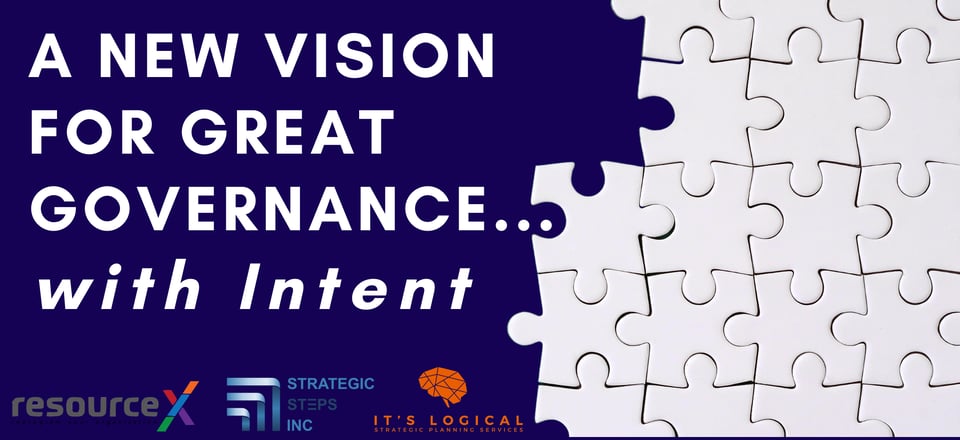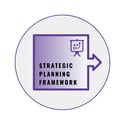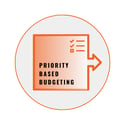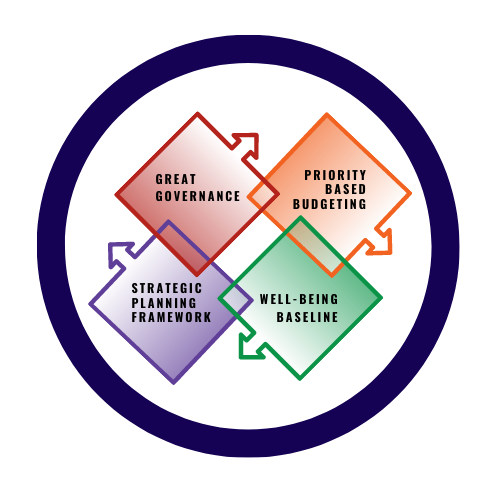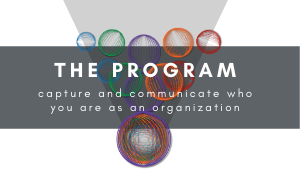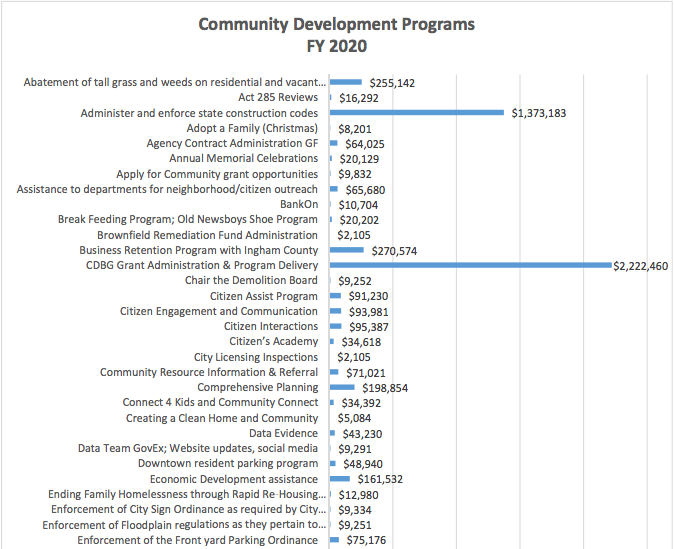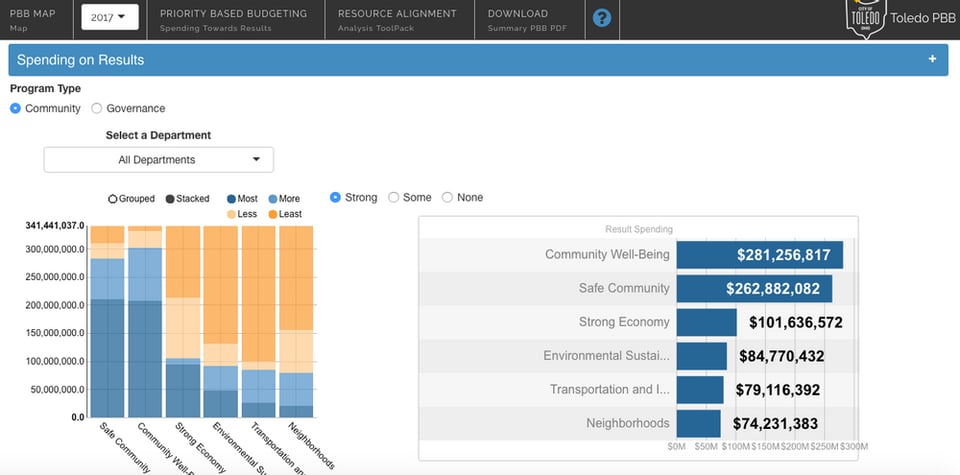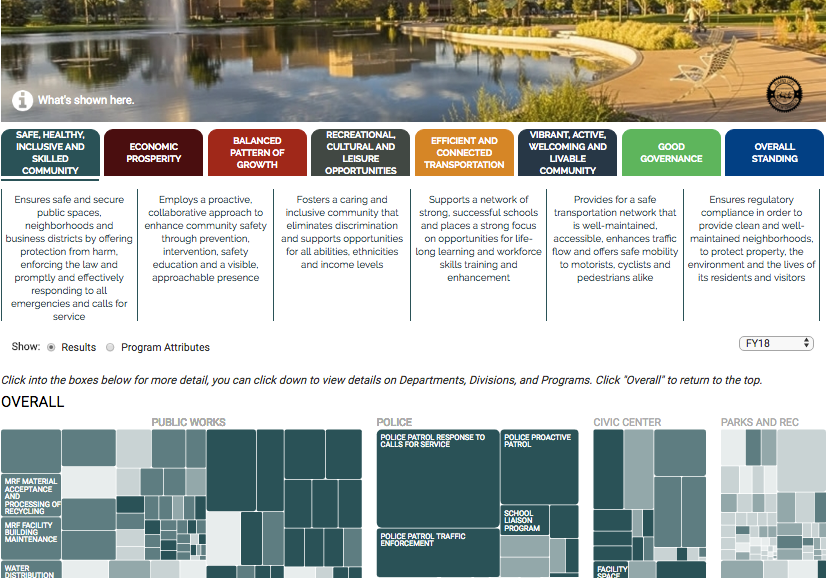
The Partnership Announcement
February 2021 brought a new partnership to the ResourceX community. Along with the practice and potential of Priority Based Budgeting, this partnership to achieve great governance brings Ian McCormack of Strategic Steps, and Kelly Rudyk of It's Logical to the table.
"One of the most exciting things to me about this particular partnership is the opportunity to bring together so many complementary components. I think we all know what it feels like to implement some fantastic initiative and get to the end or be midway through the implementation and realize, man, I'm missing something. There's another component to this. It's not the complete package. And so this quest for completeness, to be able to envision and provide for you the whole picture, the whole puzzle, all pieces included, is probably what's what's most compelling."
- Chris Fabian, ResourceX
This partnership comes together with a desire for the whole to be greater than the sum of its parts. All three companies have expertise, and part of that expertise is knowing what each does well and where each has gaps. Each fills the other's gaps and builds on the others' strengths.
Great governance is fundamentally about how people interact, their relationships, how they treat one another, and the legacies they leave for future generations.
Everything that local government has done currently does or will do is due to demand. That demand may come from local citizens or businesses, or it might come from other orders of government. There's a process that's followed to identify demands and respond to those demands with programs, services, amenities and facilities. The last step is to check that the demand has been met to the local government's ability. This process is a loop where one period's results will help inform the next period's plans. The loop could be annual, generational, or it could be something in between.
Begin with people. Without people in a geographical area, there's no need for local government.
The Four Components of the New Vision for Great Governance:
1. A true focus on the value to people, the value to our residents. That is the fundamental reason why local governments exist in the first place: to create a return on investment and value for the people we serve.
2. A long-term vision. Clearly, there are short-term needs, but to really pursue what local government is trying to do, it's fascinating to talk about a long-term vision and govern towards achieving this vision.
3. A data-driven plan backing it up. It's great to have a long-term vision and try to provide value, but we need to make sure that we can come through and fulfill and execute with the resources necessary.
4. A strong feedback loop to ensure citizen wants and needs match up to the strategic application of resources.
"Would you tell me, please, which way I ought to go from here?"
"That depends a good deal on where you want to get to," said the Cat.
"I don't much care where—" said Alice.
"Then it doesn't matter which way you go," said the Cat.
- Lewis CarrollPieces of the Puzzle
Strategic Planning: Choosing a road based on a destination. Organizations may not reach this destination in this generation. Planning for that destination allows for the environment to shift in ways that support achieving the desired destination. Put the focus on the strategy bringing about change over time, and work on creating vital and sustainable communities that focused people lead. This doesn't exist in a vacuum, of course, which is why this great governance partnership makes so much sense. Planning is important. If what's being delivered by the municipality doesn't somehow link to achieving the community's vision. Why is it being done?
Sometimes...
... It's a legacy that has never been questioned.
... It's a shiny object for which a grant was available.
... It's that it was on one elected official's to-do list.Regardless, living the examined life is important both now and regularly as Council goes through terms. There needs to be a clear cascade from who we are to what we do. Councils set aspirational municipal visions and work through mission and values as key statements. This moves to developing outcome goals, strategies or actions, and ultimately to service delivery that communities can check against performance measures. The measures can be a mix of outputs and outcomes which has changed over time. The tightest type of alignment is critical because there's always more work to do than there are resources available to do it. Councils or Boards of Directors can make choices based on what will give the community or organizations the best chance to achieve their vision.
Priority Based Budgeting: PBB leverages the resource information that all budgets start with - line item data. And the PBB epiphany is that line item data is great for budget control for basic accounting. But, it doesn't serve organizations well in connecting service provision to community priorities to make the greater good. To create a better connection, PBB builds in the program inventory.
Programs: Communicates What do we do? Programs create a shared language that tells your organization and community's story and serve as the foundation for all PBB data layers.
Cost Allocation: Communicates What does it cost? Line item data is tied to the program inventory to understand how much it costs us to do what you do.
Basic Program Attributes: Communicates the details about the program. There are basic things about the programs you provide which will serve as that foundation for decision making. Are programs mandated? Who do they serve? What population is served? Are there options for partnerships? Is there cost recovery?
Results: Communicates Why do we provide it? Results connect programs to the outcomes your organization seeks to achieve. Encourages consistent refocusing on Does this achieve the greater strategic plan? Are these programs aligned today?
Insights: Communicates a program's future direction. Insights describe that programs can evolve through resource allocation. Can you free up resources from certain areas and align them to your priorities?
The PBB data created serves to give new insight, and with greater insight, you know which programs need to be resourced at a high level and from where you can repurpose or reallocate resources away from. You need to take the ideas for resource reallocation and plant them in what is one of the most formal decision-making documents - the budget. So you can complete the feedback loop.
Well-Being Baseline: There's a huge opportunity right now to rethink governance and boil it all down to the reason for being - the reason for being an elected official - the relationship with your community. Those are the feelings that get generated when everyone gets to know each other a lot better. And that's talking about programs instead of line-item budgets.
Understanding that there are real people with real feelings, and lots of them probably live in them in the same municipality that you're paying taxes into. So there's an opportunity from a governance perspective to strive to create, build and foster relationships. Through getting to know each other and having a common purpose, the happy citizen is created, and communities can have richer conversations.
The Full Puzzle
This is what we want you to be able to achieve. It's the complete package. It's very easy to describe around our four central pieces. This is a new vision for great governance, all of these pieces working together, creating a loop. And probably one of the most important parts is that you can start anywhere within this loop. And that's really important - you can fit in that puzzle piece with any of the other components overall. The way that these pieces fit together has been one of the hallmarks of this vision overall.
Click here to learn more.
